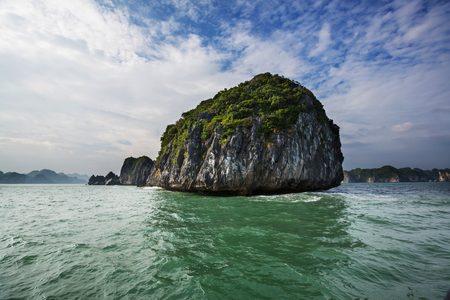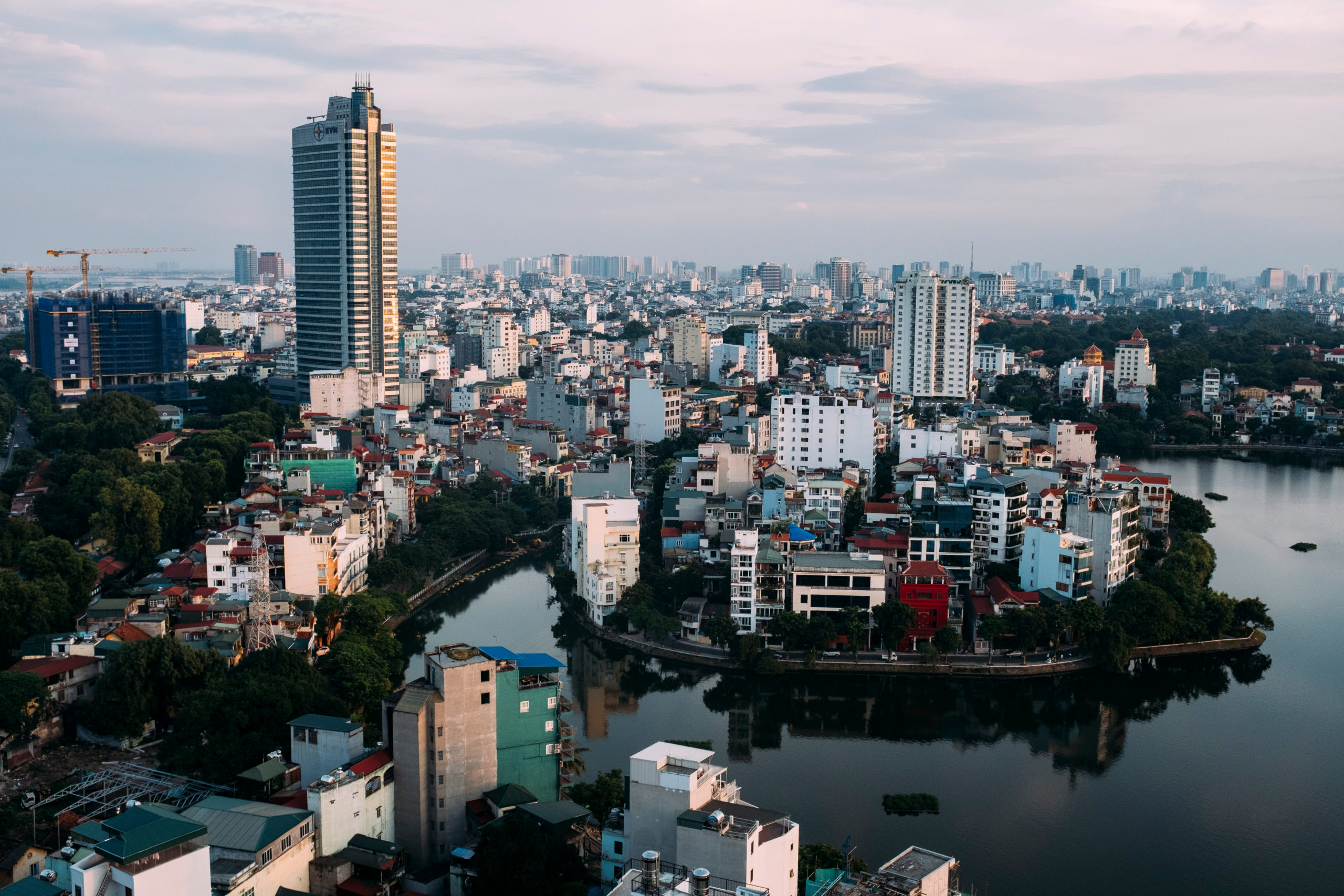15 August, 2016
Vietnam has concluded the Trans-Pacific Partnership (“TPP”) and the EU- Vietnam Free Trade Agreement (“EVFTA”). Meanwhile, the ASEAN Economic Community (“AEC”), which Vietnam became a full member in 1995, has been established since the end of 2015. With such deep integration into the multilateral and regional economy, Vietnam is expected to be an attractive investment environment for investors and witness a significant growth in the upcoming years.
Vietnam has made progress over 3 continuous years to reach 56th position in 2015 on the Global Competitiveness Index list, a jump of 12 positions compared to 2014. It is noteworthy that Vietnam is more competitive than 6 European Union countries on this list. Even more notably, 4 out of these 6 countries, namely Slovenia, Cyprus, Slovakia and Greece, are considered as advanced global economies, and have the GDP per capita of at least USD17,700, eight times more than Vietnam.
Samsung Electronics Company has decided to choose Vietnam as the Number 1 country to put their world largest mobile and tablet production and invested more than 6 Billion USD after a researching worldwide. Also major Japanese companies are convinced Vietnam is a top investment destination and become the largest investors in Vietnam.
The Vietnamese Government has made great attempts to develop itself by opening its economy to international trade, investments and free movement of people. The following section provides an overview of these free trade agreements and the AEC to help investors understand what is awaiting them ahead and decide their investment in Vietnam.
TPP
The TPP was originally known as the Trans- Pacific Strategic Economic Partnership concluded in 2006 among Singapore, New Zealand, Chile and Brunei (P-4 agreement) as a means to promote trade liberalization in the Asia- Pacific Region. As its name indicates, the original purpose of the agreement was only to address economic issues. As the number of participating countries in the P-4 agreement increased, starting with the United States in September 2008 and other countries to follow being Australia, Peru, Vietnam, Malaysia, Canada, Mexico and Japan until July 2013, the agreement is agreed to be “a comprehensive, next-generation regional agreement that liberalizes trade and investment and addresses new and traditional trade issues and 21st-century challenges” by TPP Trade ministers. In June 2015, the United States approved the trade promotion authority for President Obama.
The Agreement finally becomes as it is today through tough negotiation rounds, while the last round in Atlanta in September 2015 was considered the most intensive one. The TPP was already concluded on 06 October 2015.
TPP Market Snapshot
- GDP: US$28,136.0 billion (2012)
- GDP per capita: US$35,488 (2012)
- Population: 792.8 million (2012)
- TPP % of world GDP: 39.0% (2012)
- TPP % of world population: 11.3% (2012)
- TPP % of world trade: 25.8% (2012)
The TPP includes thirty chapters with deep focus on comprehensive market access, a fully regional agreement, cross-cutting issues (regulatory coherence, competiveness and business facilitation, small and medium sized enterprises, and development), and new trade challenges (particularly rules on state owned enterprises and government procurement).
The TPP would expand market access in goods and services among its signatories. The market access issues include liberalization of trade barriers protecting dairy, sugar, and rice; tariffs and origin rules affecting textiles, clothing, and footwear; and services trade reforms, especially financial services, insurance, and labor services.
Vietnam would be the largest beneficiary of this trade pact, resulting from its strong trade ties with the United States, high level of protection against its main exports (i.e., apparel and footwear), and its highly competitive positions in industries such as manufacturing where China is gradually losing its competitive advantage. Statistics shows that by participating in the TPP, Vietnam’s GDP would add an additional increase of 13.6% to the baseline scenario.
TTP will help Vietnam make good use of international cooperation opportunities, balance relationships with key markets, approach
larger markets including the U.S, Japan, Canada, boost import-export, reduce import deficit, and attract foreign investment. In addition, TTP will also help Vietnam’s economy allocate its resources more effectively, enabling active supports to the processes of restructuring, innovation and improving regulations, and improve administrative reforms.
Higher income will help Vietnam to invest more and grow more
Vietnam is among the largest income gains in TPP
The TPP is now being submitted for ratification in each country before it officially takes effect. Despite all political concerns, we strongly believe that the TPP will finally be implemented in 2018.
AEC
The AEC originates from the ASEAN Vision 2020, which was adopted in 1997 on the 30th anniversary of the Association of Southeast Asian Nations, made up of Brunei Darussalam, Myanmar, Cambodia, Indonesia, Laos, Malaysia, Philippines, Singapore, Thailand and Vietnam (ASEAN). With a population of more than 600 million and a nominal GDP of about $2.31 trillion, ASEAN is a strong economic community in Asia and also a driver of global growth.
The AEC encompass the following characteristics: (i) a single market and production base, (ii) a highly competitive economic region, (iii) a region of equitable economic development, and (iv) a region fully integrated into the global economy.
The AEC is expected to be an area where goods can circulate freely and in which custom duties on goods will be gradually reduced to 0%. It will establish ASEAN as a single market and production base, making ASEAN more dynamic and competitive with new mechanisms and measures to strengthen the implementation of its existing economic initiatives; accelerating regional integration in the prioritized sectors; facilitating movement of business persons, skilled labor and talents; and strengthening the institutional mechanisms of ASEAN.
The free flow of investment will also offer enhanced investment protection to all ASEAN investors and their investments in other ASEAN member countries, including the settlement mechanism of an investor state dispute based on a non-discrimination principle when investing in other ASEAN countries. Those principles play a very important role in providing investor confidence when making cross-border investment.
Once the AEC is completed, it will be a unified market, a common manufacturing area seeking for more dynamic and competitive development and to create new opportunities for tariff reductions as well as other trade incentives.
AEC Market Snapshot
- GDP: US$2311.3 billion (2012)
- GDP per capita: US$3748.4 (2012)
- Population: 620 million, 60% under the age of 35
- AEC % of world GDP: ~3.3%
- AEC % of world population: 9%
- AEC’s merchandise exports: US$1.2 trillion – ~54% of total ASEAN GDP and 7% of global exports
- If ASEAN were one economy, it would be the 7th largest in the world – 4th largest by 2050 if growth trends continue
EVFTA
On 02 December 2015, after nearly 3 years with 14 rounds of negotiations, the Minister of Industry and Trade of Vietnam, H.E. Vu Huy Hoang and the European Commissioner for Trade, H.E. Cecilia Malmström have signed the EVFTA. Both parties will finalize the ratification process as soon as possible for the EVFTA to take effect from the beginning of 2018.
The EVFTA is considered one of the most comprehensive and ambitious trade and investment agreements. It is the second agreement in the ASEAN region after Singapore and it will intensify the bilateral relations between Vietnam and the EU.
The agreement has separate chapters on Trade of Goods, Rules of Origin, Customs and Trade Facilitation, Sanitary and Phytosanitary measures and Technical Barriers to Trade, Trade in Services, Investment, Trade Remedies, competition, State-Owned Enterprises, Government Procurement, Intellectual Property, sustainable Development, Cooperation and Capacity Building, Legal and Institutional Issues.
Nearly all customs duties – over 99% of the tariffs will be eliminated. The small remaining number is mainly due to the transition period. Vietnam will liberalize 65% of import duties on EU exports to Vietnam at entry into force and the remaining duties will be eliminated due to the next ten years; EU duties will be eliminated over a seven year period. The market will be opened for most of EU food products, i.e. wine, spirits and frozen pork meat will be liberalized after seven years and dairy products after a maximum of five years. The EU will eliminate duties for some sensitive products in the textile and footwear sector. The EU has offered access to Vietnamese exports via tariff rate quotas (TRQs), because some sensitive agricultural products will not be fully liberalized.
Furthermore, the agreement will contain an annex with provisions to address non-tariff barriers in the automotive sector. Vietnamese exports of textile, clothing and footwear to the EU are expected to more than double in 2020 as a result of the EVFTA.
The EVFTA will help to increase quality of investment flows from EU, accelerate the process of sharing expertise and transfer of green technology and the creation of more employment activities.
The real wages of skilled laborers may increase by up to 12% while real salary of common workers may rise by 13%. The macro economy will be stable and inflation rate is controlled. Vietnam’s business activities will be booming in the next few years once the EVFTA officially comes into force and Government’s policies as well as institutional reforms start showing their positive effects.
Vietnam’s GDP is expected to increase by 0.5% annually, increase in exports is 4-6% per year. If this trend continues until 2020, Vietnam’s exports to EU will increase by USD 16 billion. Until 2025, the EVFTA is estimated to generate an additional 7-8% of GDP above the trend growth rate.
In 2013, the EU was Vietnam’s second biggest trade partner with a total value of trade in goods of EUR 24.2 billion. In the same the EU was also Vietnam’s biggest export market with EUR 21 billion, representing 19% of Vietnam’s total export. Vietnam’s export to EU increased by 28% from 2012 to 2013. In addition, the EU is among the biggest investors in Vietnam, with 1,810 FDI projects in 2013. The EU committed to continuing to support with the foreseen assistance amount of EUR 400 million in the coming six years.
EU exports to Vietnam are dominated by high-tech products including electrical machinery and equipment, aircraft, vehicles, and pharmaceutical products. Vietnam’s key export items to the EU include telephone sets, electronic products, footwear, textiles and clothing, coffee, rice, aqua products, and furniture.
Conclusion: Why investment in Vietnam now?
Vietnam ties in first place with Singapore, thus it provides highest possible protection for investment
| Country | Limitation of market access* | Country | Limitation of market access* |
| Malaysia | medium | Myanmar | high |
| Indonesia | medium | Cambodia | medium |
| Philippines | medium | Laos | medium |
| Singapore | low | India | high |
| Thailand | medium | China | medium |
| Brunei | high | Vietnam | low |
*Typical restrictions: number of opened sectors, JV requirement, limits on foreign-owned shares, permission requirement
Vietnam has the fastest growing middle class with a very good demographic situation: about 90 Million people of which about 50 percent are under 30 years old.
Expectations of Vietnam parties might get unreasonable, the same as after Vietnam acceded to the WTO in 2007 and no projects could be done.
Market opening in certain sectors, for example, media, and there could be more competing companies from the AEC with better market access to Vietnam. Thus, it is vital that investors start working on their projects now to position themselves as early as possible before the coming into effect of the trade pacts.
For further information, please contact:
Oliver Massmann, Partner, Duane Morris
omassmann@duanemorris.com

.jpg)





